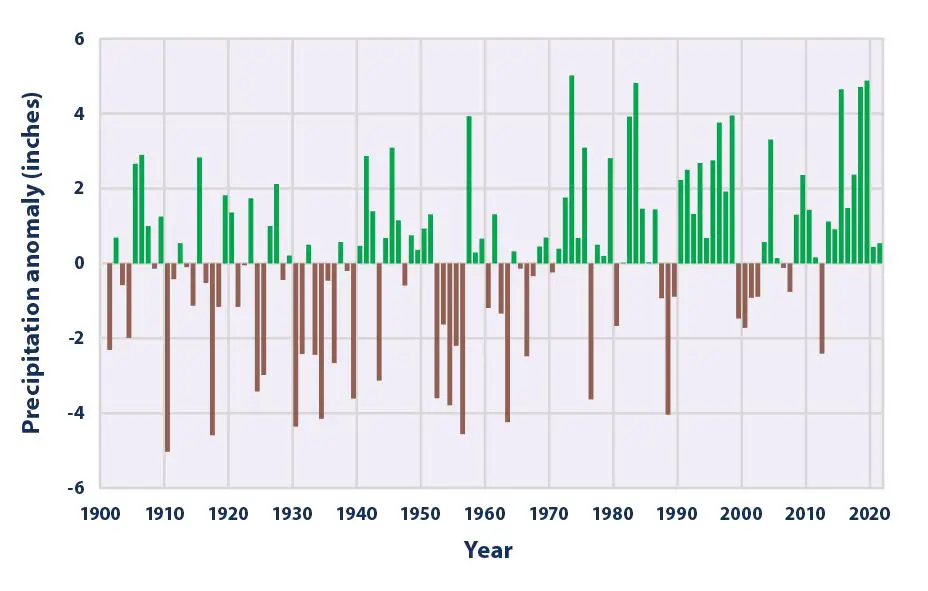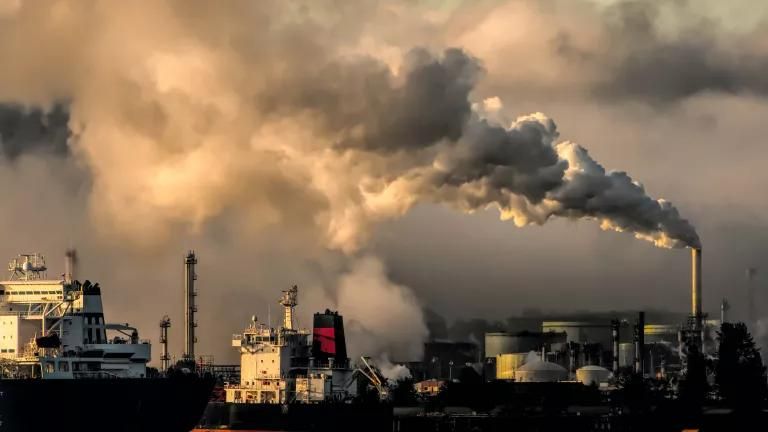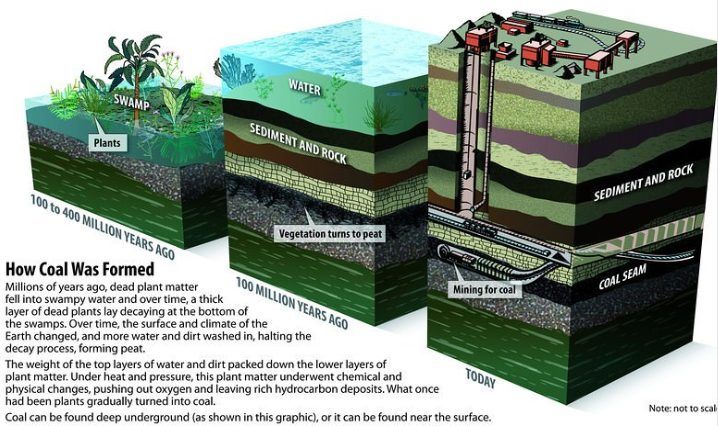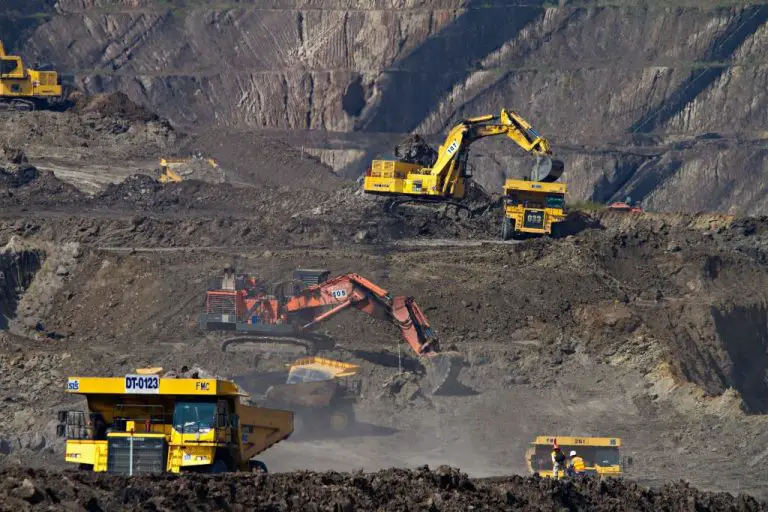What Are The Main Effects Of The Greenhouse Effect?
The greenhouse effect is the process by which certain gases in the Earth’s atmosphere trap heat from the sun. The most abundant greenhouse gas is water vapor, followed by carbon dioxide, methane, nitrous oxide, and ozone. Without the natural greenhouse effect, the average temperature on Earth would be below freezing. However, human activities since the industrial revolution, such as burning fossil fuels, agriculture, and land use changes, have increased greenhouse gas concentrations and amplified the greenhouse effect.
The main greenhouse gases that humans have added to the atmosphere are carbon dioxide, methane, nitrous oxide, and fluorinated gases. As these greenhouse gas levels increase, more heat is trapped in the atmosphere. This extra heat warms the Earth’s surface and the oceans, leading to wide-ranging effects on climate and weather patterns.
Rising Global Temperatures
According to data from NASA and NOAA, average global temperatures have increased by around 1.8°F (1°C) since the late 19th century. In fact, the decade from 2011 to 2020 was the warmest on record since we started measuring surface temperatures over 160 years ago. The six warmest years on record have all occurred since 2015, with 2020 tying 2016 as the warmest year ever recorded.
What’s concerning is not just the gradual increase in average global temperature over the long-term, but the accelerated pace of warming seen in recent decades that is continuing today. The past five years from 2016 to 2020 were the five warmest years in the instrumental record, with 2016 being 1.25°C above pre-industrial levels. The warming trend is clear and unequivocal.
The higher frequency of extremely hot days and nights is also evidence of rising global temperatures. New temperature records are being set more often than record cold temperatures. 2020 witnessed several exceptional heatwaves, including across Siberia where temperatures reached over 100°F above normal in the Russian Arctic. These record-shattering temperatures are becoming the new normal.
In summary, observational data over the past 160+ years shows a clear warming trend in global average surface temperatures, with accelerated warming in recent decades. The warming signal is evident across land and oceans, and through rising extremes in hot temperatures. This rise in global temperatures is an unambiguous signature of climate change.
Melting Polar Ice Caps
The greenhouse effect is causing significant melting of the polar ice caps in both the Arctic and Antarctic regions. In the Arctic, satellite observations show that September sea ice extent has declined by approximately 40% since 1979. The decline is accelerating, with 12 lowest sea ice minimums in the satellite record occurring in the last 12 years.
The decline in Arctic sea ice is being driven primarily by rising global temperatures caused by increased greenhouse gases. As the Arctic warms at twice the global rate, it leads to more melting of multi-year ice. Thinner first-year ice is more vulnerable to melting in the summer. Loss of sea ice also creates a feedback loop, as ice reflects more sunlight than open water. Less ice means more sunlight is absorbed, increasing Arctic temperatures further.
In Antarctica, satellite and ground observations show widespread melting and accelerated ice flow in areas such as the Amundsen Sea Embayment and the Antarctic Peninsula. Several major Antarctic ice shelves have collapsed in recent decades. Of particular concern is the stability of the West Antarctic Ice Sheet, which contains enough ice to raise global sea levels by 4-5 meters if melted completely.
Overall, the continued decline of both polar ice caps is expected to significantly contribute to rising sea levels, which threatens coastal communities around the world. The melting also disrupts local ecosystems and habitat for animals like polar bears in the Arctic.
Rising Sea Levels
One of the most concerning effects of climate change is the rise in global sea levels. Since the late 19th century, the average global sea level has risen by about 8 inches (20 centimeters). This rise is being driven primarily by two factors related to global warming:
- Melting glaciers and ice sheets – As land ice melts, the water runs off into the ocean, increasing the volume of water in the seas.
- Thermal expansion – As ocean temperatures increase, seawater expands in volume.
The two major ice sheets on Earth – the Greenland ice sheet and the Antarctic ice sheet – have been losing mass at an accelerating rate over the past few decades. It’s estimated that the Greenland ice sheet is now losing around 286 billion tons of ice per year, while Antarctica is losing around 127 billion tons of ice annually. This meltwater ends up in the oceans, causing sea levels to steadily rise over time.
Scientists have estimated that for each degree Celsius of global temperature rise, global sea levels could increase by up to 2.3 meters over the long term. However, the rate of sea level rise is not expected to be uniform across the globe. Regional variations will occur based on factors like ocean currents and proximity to melting ice sheets. Low-lying coastal regions and island nations are seen as the most vulnerable to the impacts of rising seas.
If greenhouse gas emissions continue unabated, models show that global sea levels could rise between 2 to 6 feet (0.6 to 1.8 meters) or more by the end of this century. Such a drastic rise in sea levels could displace millions of people living in coastal cities and communities around the world.
Changes in Precipitation Patterns
One of the key effects of global warming is changes to precipitation patterns around the world. As temperatures rise, the rate of evaporation increases, putting more moisture into the atmosphere. This extra moisture fuels an increase in heavy precipitation events in many parts of the world. Places that are already wet are generally getting wetter. Increased precipitation has been observed in eastern parts of North and South America, northern Europe, and northern and central Asia.

At the same time, areas that are normally dry are also getting drier. Observations show precipitation decreases in southern Africa, the Mediterranean, southern Australia and parts of southern Asia. This happens because moisture is evaporating faster in dry areas, resulting in drought. Higher temperatures also reduce soil moisture through increased evapotranspiration.
As precipitation patterns change, we see more extreme rainfall events, like flooding and tropical storms, interspersed with more frequent and severe droughts. These changes can have devastating impacts on ecosystems, agriculture, and water resources around the world. Careful monitoring of precipitation changes is crucial for preparedness and climate resilience.
Increased Frequency of Extreme Weather
One of the most concerning effects of the greenhouse effect is the increased frequency and severity of extreme weather events across the globe. Scientists have observed significant increases in dangerous heatwaves, flooding, wildfires, droughts and storms in recent decades.
According to data from the National Oceanic and Atmospheric Administration (NOAA), the number of billion-dollar disasters in the United States, adjusting for inflation, has increased dramatically over the past few decades. In the 1980s there was an average of 3 billion-dollar disasters per year. In the 2010s, this increased to 16 billion-dollar disasters per year.
The Intergovernmental Panel on Climate Change (IPCC) reports that human-induced global warming has already caused an increase in the frequency, intensity and duration of heatwaves globally. For example, the record-breaking 2003 European heatwave was made at least twice as likely by climate change. Heatwaves can be extremely dangerous, causing heatstroke, droughts and wildfires.
Warmer air and oceans are also leading to more frequent and intense storms and flooding in many regions. Hurricanes are becoming more intense, as warmer oceans provide more energy. Extreme rainfall events are also increasing globally due to the increased moisture holding capacity of warmer air.
In summary, scientists have clearly linked climate change to increases in many types of dangerous extreme weather events across the globe. These threaten lives, property, agriculture, ecosystems and infrastructure through flooding, storms, heatwaves, drought and wildfires. Adapting to more frequent and intense extreme weather is an urgent challenge for communities worldwide.
Threats to Ecosystems
The greenhouse effect poses significant threats to ecosystems and biodiversity worldwide. As global temperatures rise, many species struggle to adapt to warming habitats and changing climatic conditions. Important ecosystems like coral reefs and rainforests face collapse as temperatures push beyond the survival thresholds of many sensitive organisms.
The distributions of plant and animal species are shifting as they follow their optimal climatic conditions to cooler regions. However, some species will be unable to migrate quickly enough to keep up with the pace of climate change. Many plants and animals face heightened risks of extinction as their habitats shrink and populations decline. It’s estimated that 15-37% of species worldwide could face extinction by 2050 due to climate change impacts.
Changes in precipitation and increased droughts are altering ecosystems like grasslands, wetlands, and forests. Drier conditions lead to more wildfires that can permanently change landscapes. Invasive species tend to thrive in disturbed ecosystems, displacing native species that have difficulty adapting to the shifts. Declining biodiversity across many ecosystems threatens their resilience and stability.
The greenhouse effect highlights the interconnected nature of Earth’s ecosystems. Disruptions to one habitat or region through climate change can have cascading effects across the biosphere. Protecting global biodiversity requires reducing greenhouse gas emissions and assisting ecosystems under climate stress.
Effects on Human Health
Climate change poses significant threats to human health and wellbeing. Rising global temperatures contribute to more frequent and intense heat waves, which can be deadly for vulnerable populations like the elderly, children, outdoor workers, and those without access to air conditioning. Prolonged exposure to extreme heat leads to heat cramps, heat exhaustion, heatstroke, and exacerbates underlying medical conditions.
Higher temperatures also worsen air quality by increasing ground-level ozone, pollen, and wildfire smoke. This leads to more respiratory and cardiovascular problems like asthma attacks, chronic obstructive pulmonary disease, stroke, and heart attacks. Climate change enables infectious diseases to spread wider through warmer winters, increased flooding from heavy rain, and expanded ranges for disease-carrying insects like mosquitos and ticks.
Mental health issues like anxiety, depression, and post-traumatic stress disorder are expected to rise with climate change as people experience injuries, illness, trauma, and displacement from extreme weather disasters. There are also emotional and psychological impacts from gradual environmental degradation and loss. Overall, the direct and indirect health effects of climate change disproportionately affect vulnerable populations with existing health vulnerabilities.
Socio-Economic Impacts
The global climate changes brought on by the greenhouse effect will have significant socio-economic consequences across the world. Rising sea levels, changing rainfall patterns, and an increase in extreme weather events will profoundly impact human societies.
Coastal communities are particularly vulnerable to sea level rise and stronger storms. As oceans swell and coastlines recede, coastal populations will be displaced and forced to migrate. Low-lying island nations face an existential threat from rising seas. Developing countries will be the hardest hit and least able to adapt.
Shifting precipitation patterns and increased drought will make farming more difficult and reduce crop yields in many regions. This raises concerns about potential food shortages and the security of the global food supply. Water resources will also come under strain in many areas as supplies dwindle.
Climate change is predicted to exacerbate poverty, hunger, and inequality worldwide. Developing countries that rely on agriculture will be the most severely impacted. Rising temperatures may also contribute to civil unrest and conflict as resources become scarcer.
Adapting infrastructure and economies to a changing climate will carry a steep price tag. However, the costs of inaction against climate change will likely be far greater in the long run. Urgent steps must be taken to reduce greenhouse gas emissions and build more resilient societies in the face of unavoidable impacts.
Conclusion
The greenhouse effect is having profound impacts on our planet. As we have seen, some of the main effects include rising global temperatures, melting polar ice caps, rising sea levels, changes in precipitation patterns, increased extreme weather, threats to ecosystems, and effects on human health and socio-economic systems. These impacts are already being felt across the globe and are expected to intensify in the coming decades.
The urgency of addressing climate change cannot be overstated. If left unchecked, the consequences will be catastrophic for many societies and ecosystems. Concerted action is needed across all sectors to transition to renewable energy, enhance efficiency, reduce emissions, and build resilience. With global cooperation and technological innovation, we can curb the worst effects of climate change. But action must be swift as we are already seeing the repercussions of decades of unchecked greenhouse gas emissions. Addressing climate change is the challenge of our lifetime, but also an opportunity to build a more sustainable world for current and future generations.






